Cat Losing Hair on Its Ears: Common Causes, Diagnosis,Treatments

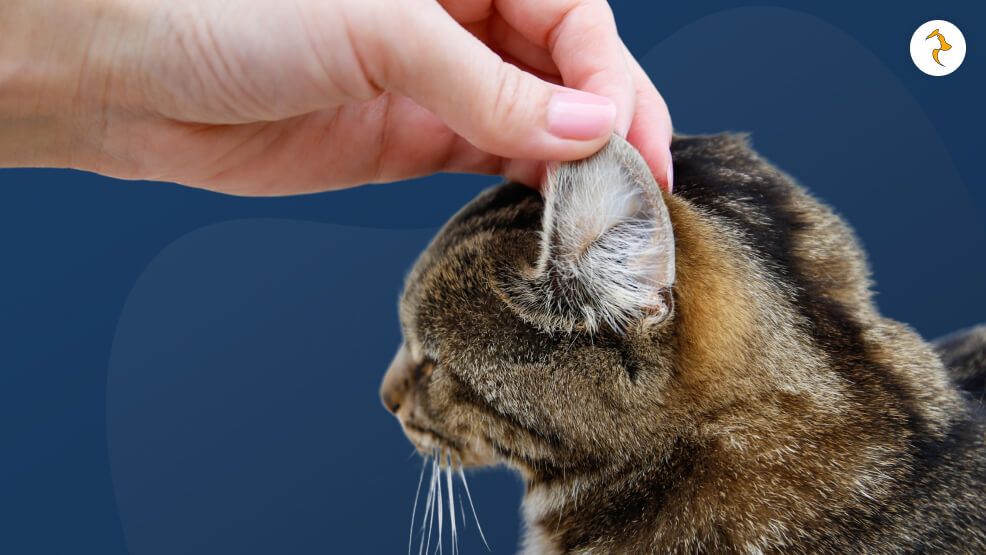
Generally, cats shed a little of their hair and don’t often create a problem. But the problem might worsen if it starts showing up on certain parts of the body, such as on the ears.
Hair loss, though appearing localized or even excessive, often seems to require extra care as it hints at some form of medical condition.
Cat losing hair on ears can happen for various reasons and should be treated after diagnosis. Its diagnosis, treatment options, and possible ways to stay away from a problem like it again in the future can be considered a fully understood affair.
Use the guidelines in this article for all information related to providing care for your cat’s ear.
Understanding Cat Alopecia

Hair loss in cats is also called alopecia. There are many reasons why a cat loses its hair. Usually, cats shed their fur as part of their normal routine. But losing hair from some areas at the ears calls for attention concerning a health issue.
Cats have sensitive ears. They can come with infections, parasitic infestation, or allergies, leading to hair loss. Sometimes, they bring scalp itchiness, scratching, headshaking, and, at times, redness accompanied by some discharge. It might help diagnose the cause.
Understanding the cause of hair loss in your cat’s ears is essential in ensuring timely and proper management.
Although ear hair loss may be harmless and self-limiting to some cats, it may be a medical condition to others. Like, the remainder of this article shall discuss the common causes of hair loss in cats’ ears and the management of the condition.
Cat Losing Hair On Ears: Common Causes
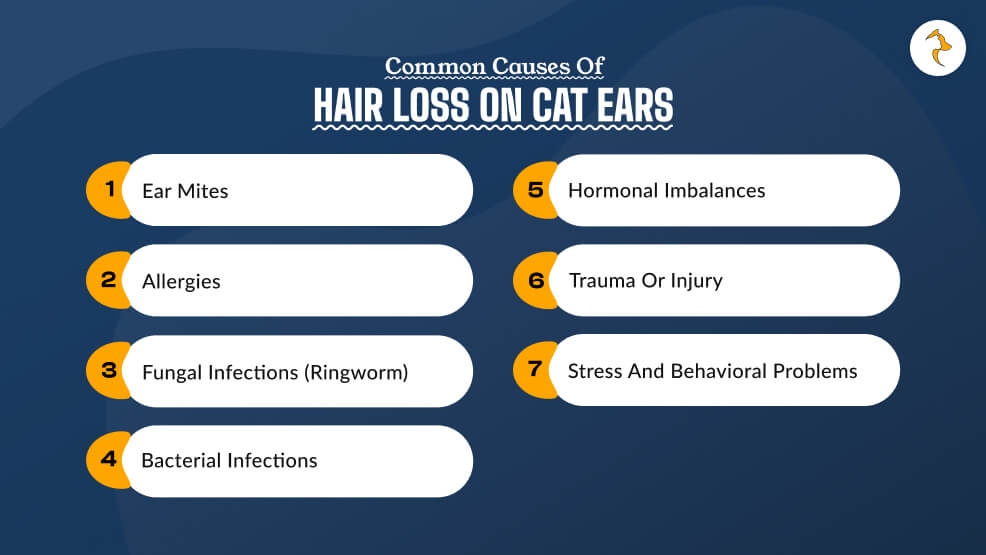
Hair loss in a cat’s ears is due to a multiplicity of causes. Therefore, it is important to identify the particular cause to direct appropriate treatment. The most common reasons why a cat loses hairs on their ears include the following:
1. Ear Mites
Ear mites are one of the most common causes of hair loss in cats’ ears. These microscopic parasites stay inside the ear canal and cause irritation and itchiness. Infected cats with ear mites are continuously scratching their ears and shaking their heads.
So, they will lose hair since they will keep grooming or scratching in that area. The ear canal is inflammatory. One might see a dark waxy discharge in the ear that can sometimes resemble coffee grounds.
Ear mites are highly infectious, especially among multi-pet houses or outdoor living cats. Nevertheless, if your cat is experiencing hair loss within its ears and it’s not acting too well. There is a compelling reason to get it to receive proper ear mite infestation treatment.
2. Allergies
Allergies are yet another very common cause of hair loss in the ear region of cats. Cats are prophesied to develop allergies due to environmental allergens such as pollen, dust mites, and mold or food allergens.
They include specific proteins or grains. The cat tends to itch and scratch its ears due to allergic reactions, which cause hair loss.
For instance, the allergy is environmental, there will be all symptoms of sneezing, watery eyes, or even respiratory problems associated with hair loss.
The cat can generally support food allergies by showing gastrointestinal signs of vomiting and diarrhea. Most allergies will be treated with a dose of antihistamines and steroids or by a diet change.
3. Fungal Infections (Ringworm)
Ringworm is an infection with fungi and causes localized hair loss, usually around the ears and other areas. Although known as “ringworm,” it has nothing to do with worms since a fungus causes it, but the name refers to a fungus known as the dermatophyte.
The infection usually occurs with hair falling on one side and forming a red, scaly ring. Besides losing their hair, ringworm-infected cats usually feature some skin redness and inflammation.
Ringworms are contagious and can easily spread from one animal to another or even to humans. The sooner the diagnosis and treatment, the better the prognosis in ringworm-infected cats.
Generally, the basis of the treatment includes antifungal medication, topical applications, and cleaning of the environment to prevent further re-infection.
4. Bacterial Infections
Bacterial infections of the ears are common in cats. This is particularly so if their immune system has compromise, or they have been exposed to ear mites.
Infections can be secondary to trauma, debris, or an accumulation of the same, as well as due to chronic infestations of ear mites. This infection is characterized by swelling, redness, hair loss around the ear, and a foul odorous discharge.
Infected ears are usually very painful, and your cat may paw at or shake its head. Bacterial infections will worsen and continue into the ear canal; this is when pain is involved, and possibly permanent damage occurs if left untreated.
5. Hormonal Imbalances
Since fur shedding and growth coincide with each cycle, hormonal imbalance causes loss. Hypothyroidism is a health condition characterizing excessive production of abnormally decreasing amounts of thyroid hormones.
Cushing’s disease has something to do with high cortisol hormone levels. A change in a person’s balance of these will affect the nature of their pattern of the growth cycle; as such, an abnormal fur-shedding, or fur, may lead from this process might primarily happen over the ears.
In hormonal imbalances in cats, the symptoms include weight gain or weight loss, lethargy, alteration in appetite, and skin disorders associated with hair loss. In most cases, treatment usually rectifies their hormonal imbalance through medication and other therapies.
6. Trauma or Injury
Cats are naturally curious. They may get injured playing, exploring, or fighting other animals.
Trauma from a scratch, a bite, or other injuries may cause the hair to fall off in that area of the ear. Cats will try to scratch or bite at the wound, and the hair loss worsens.
Infections cause swelling and discharge, and hair loss often occurs around the site of damage. Injuries should take care of in time to not further complicate hair loss.
7. Stress and Behavioral Problems
Psychogenic alopecia is a result of stress and anxiety or even boredom and puts cats into a state of over-grooming or self-mutilation. Cats may continue chewing on or licking their ears obsessively and even cause hair loss.
The best example of stress-induced hair loss is a change of environment in your cat. Perhaps your kitty is relocating to a new house, there is a new pet inside the house, or there’s even a change in routine.
This is usually seen in highly stressful or anxious cats. In addition to alopecia of the ears, such cats may also display other behavioral signs such as pacing, vocalization, or hiding.
Diagnosis of Why My Cat Losing Hair On Ears
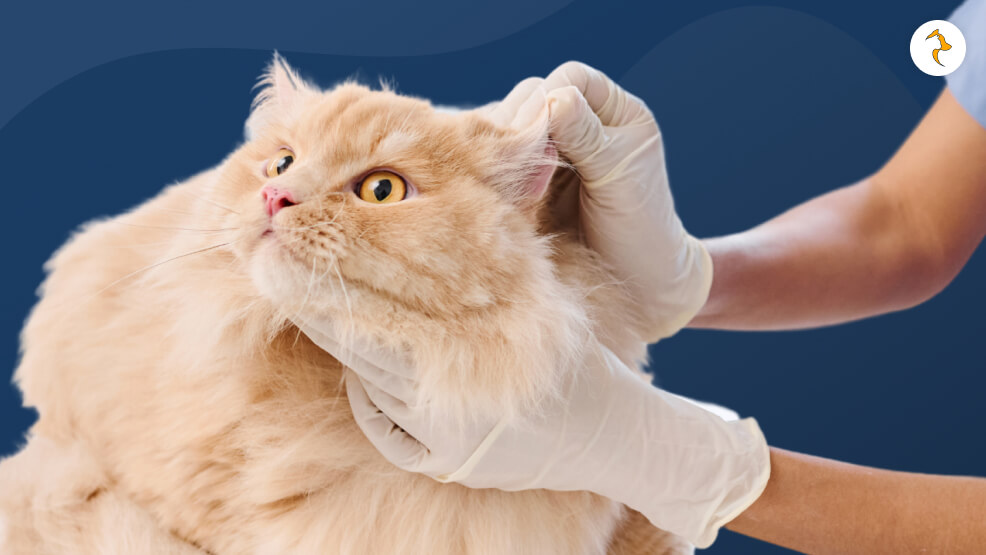
Any hair loss in your cat’s ears must be consulted with the veterinary doctor, who will help diagnose the cause. A veterinarian can only examine to rule out a variety of possibilities. Your veterinarian may carry out the following diagnostics:
- Ear Check: The vet will check for signs of infection in the ears, mites, or anything unusual. He might use an otoscope to see what is happening inside the ear canal.
- Microscopic Examination: the vet suspects infestation from ear mites or other fungus infections; there is a possibility that the vet might want to draw samples of the inner ears and run these samples through a microscope.
- Skin Scrapping: On the other hand, if the vet suspects a ringworm by any chance, he can make skin scrapings to analyze its presence or not.
- Blood Tests: Blood work can be done to diagnose the conditions that cause this; the conditions might include hormonal imbalances, thyroid problems, or other systemic issues.
- Allergy Testing: When the vet has suspected allergies, she will perform the test required to detect which allergen your cat is allergic to.
Treatment for Cat Losing Hair On Ears
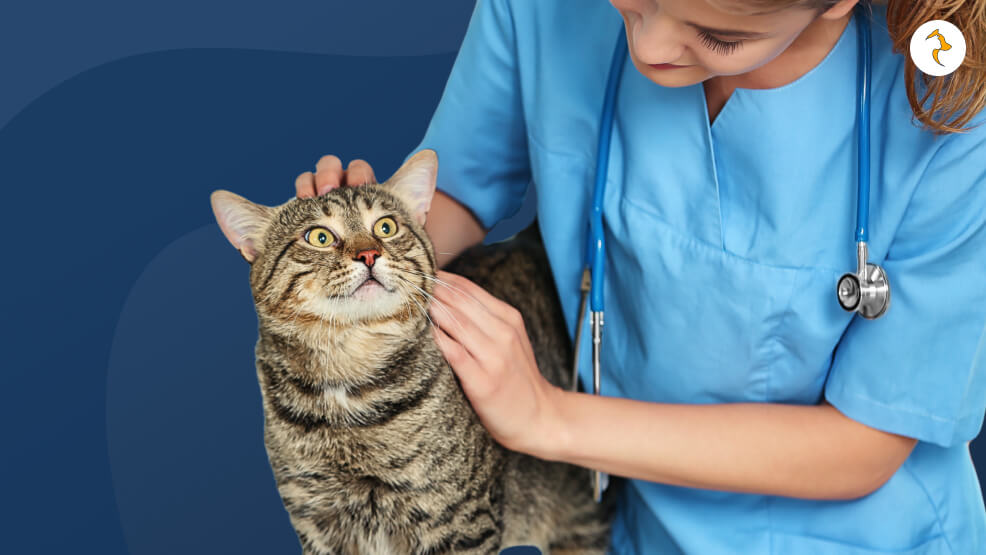
After the diagnosis is done, your veterinarian will give a suitable treatment for hair loss on the grounds of its cause. The following are the treatments given to it:
1. Treatment of Ear Mites
Ear mites are usually prescribed ear drops or oral medications that could kill the mites and increase further reduction of inflammation.
Apart from this, your vet could also advise cleaning cat ears to help remove a considerable number of debris and wax buildup on the ears. Sometimes, treatment repeats in some cases of infestation.
2. Antibiotics and Antifungal Medications
The vet can administer antibiotics or antifungal medication for ringworms and other bacterial or fungal infections.
Oral medication, topical creams, and medicated ear drops can also be treatments against ringworm; always complete treatment to eliminate infection.
3. Allergy Control
Administration of the drug antihistamines or corticosteroids would relieve the allergic reaction symptoms.
Depending on the type of allergy, the veterinarian may also switch to a hypoallergenic diet if a food allergy is suspected and in the case of environmental allergies.
4. Hormonal Therapy
Hypothyroidism, or Cushing’s disease, caused by hormonal imbalances, will need life-long management using medication for the stabilization of hormones.
Your veterinarian will monitor your treatment and alter the prescribed medications based on your progression.
5. Stress Management and Behavioral Therapy
Management to reduce stress should be fundamental for the cat with hair loss secondary to stress; you could even need to create a more stimulating environment of toys, scratching posts, safe spaces, etc.
In conjunction with this, and sometimes as a standalone valuable as a single treatment, anti-anxiety medication or, more commonly, calming pheromone diffusers.
6. Wound care
If the cause is trauma or injury, your veterinarian will clean the area and possibly apply topical antibiotics to prevent infection.
Keep the area clean and prevent your cat from scratching or rubbing the injury to aid healing.
Prevention of Cat Losing Hair On Ears
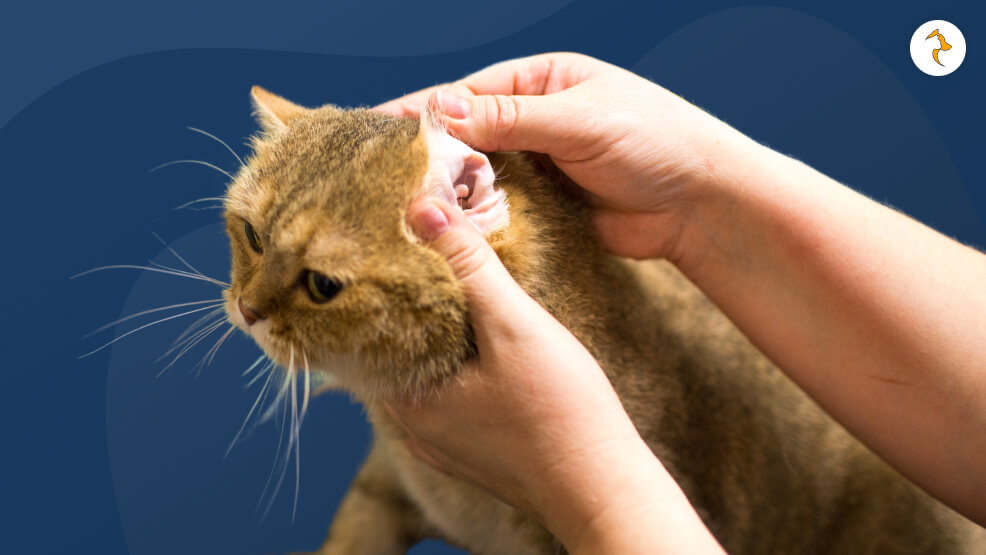
Proper care and attention can prevent hair loss in your cat’s ears. The following strategies could be used:
- Ear Checks Now and Then: Check for dirt, wax buildup, or an abnormal discharge in the cat’s ears. Clean ears can reduce ear mites and infections.
- Allergies Tamed: Fix allergies at once. After consulting with your veterinarian, identify the allergies and remove the allergen from the living environment.
- Low-Stress Life: Give your kitty a quiet home and give them toys and games to distract them.
- Routine Visits to the Vet Such routine visits could benefit the veterinarian in diagnosing such conditions at an early enough stage to maintain your cat in good health.
When Should You Take Them To A Vet?
Mild hair thinning is not a cause of concern and resolves on its own with stress management and better grooming.
However, if a cat losing hair on ears does not change or gets worse and there are some other symptoms as well, then you need to take them to a vet.
Take them to a vet immediately, if you notice some of these things:
- If the hair loss is spreading beyond their ears to other parts as well.
- If there is broken, red or scaly skin around their ears.
- You cat shows signs of lethargy, a shift in behavior or a change in appetite.
- If they are scratching their ears excessively or shaking their head a lot.
At Home Care Tips
Apart from following the vet’s guidance, there are a few things you can try are home to support their skin and coat health.
- Keep them groomed. Brush their hair gently as that would remove the loose fur. Moreover, it distributes their natural oils evenly and promotes a healthy coat.
- Use a non-irritating cleanser and clean their ears gently. This will maintain ear hygiene and flush out all the debris.
- Keep their environment stress free. Prepare a consistent meal plan and play routine to reduce any kind of anxiety-related grooming behavior.
- Consult your vet for a high-quality diet and supplements to ease their allergies and keep their coat healthy.
- You need to take note of the weather as well. Seasonal shifts can make their skin dry during the winters and cause fungal growth during hot, humid days.
Keep An Eye On Them
A cat losing hair on its ears can be stressful, but if you can figure out the cause behind them, it will be easy to treat them.
Whether this is due to ear mites, allergies, fungal infections, or even stress, it is on its own a reason to simply diagnose the ailment, treat, and conquer this infection.
Most of such typical causes related to hair falling in the region of the ears could have been much better avoided if it had been the case that the pet frequently visited the veterinarian clinic for regular visits and inspection by veterinarians.
FAQs
Here are a few FAQs on the topic amoxicillin for dogs, that are asked by other people.
Common causes for falling out at the ears among female cats, as in males, run from ear mites to fungus infections and allergies.
And again, this will always call for the veterinarian for diagnosis. Analogous causes of male cats’ hair loss on the ears are ear mites, infections, and stress. A veterinary checkup can point out the cause.
Treatment will depend on the underlying cause. If ear mites are the problem, then the veterinarian will prescribe medicine.
For infections, antibiotics or antifungals might be needed. For allergies, the vet might administer antihistamines or steroids.
Loss of fur around your cat’s ears can cause stress but could be understood by knowing the potential causes and treatments.
Regardless of the reason, mites, allergies, fungal infections, or even stress, an underlying cause must be diagnosed to start the correct medication and treatment for a disease





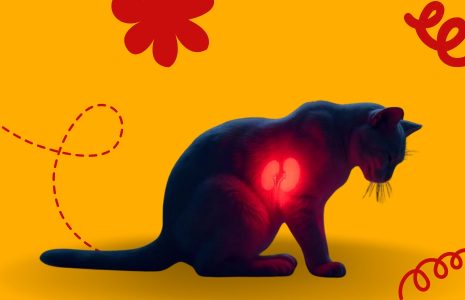

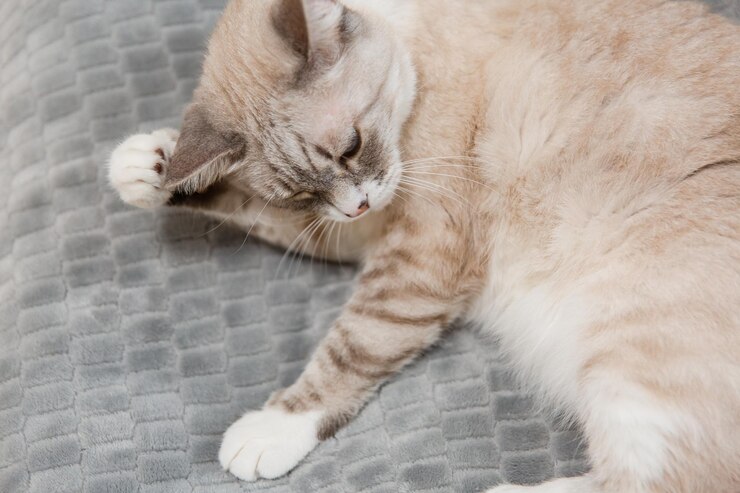
Leave A Comment